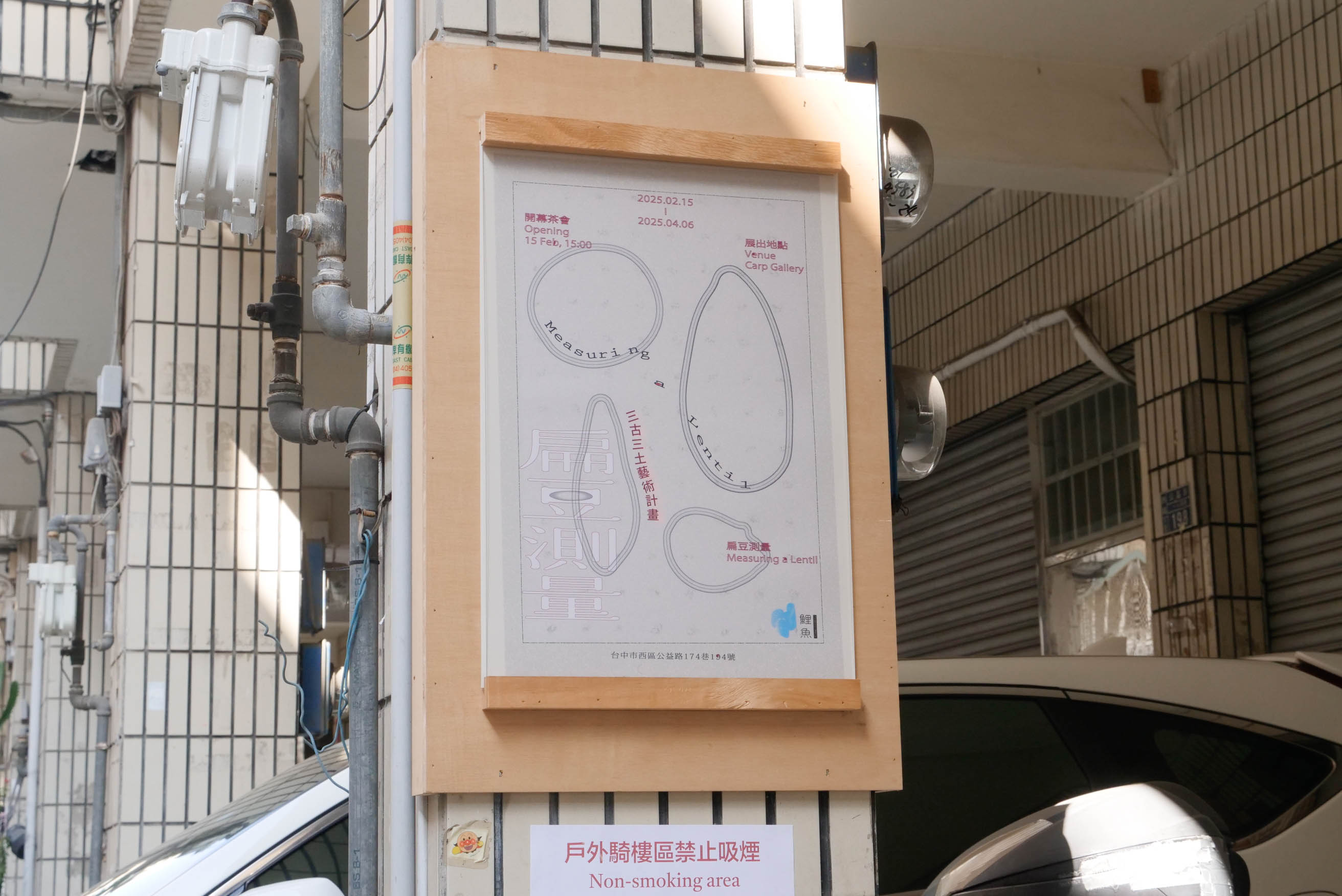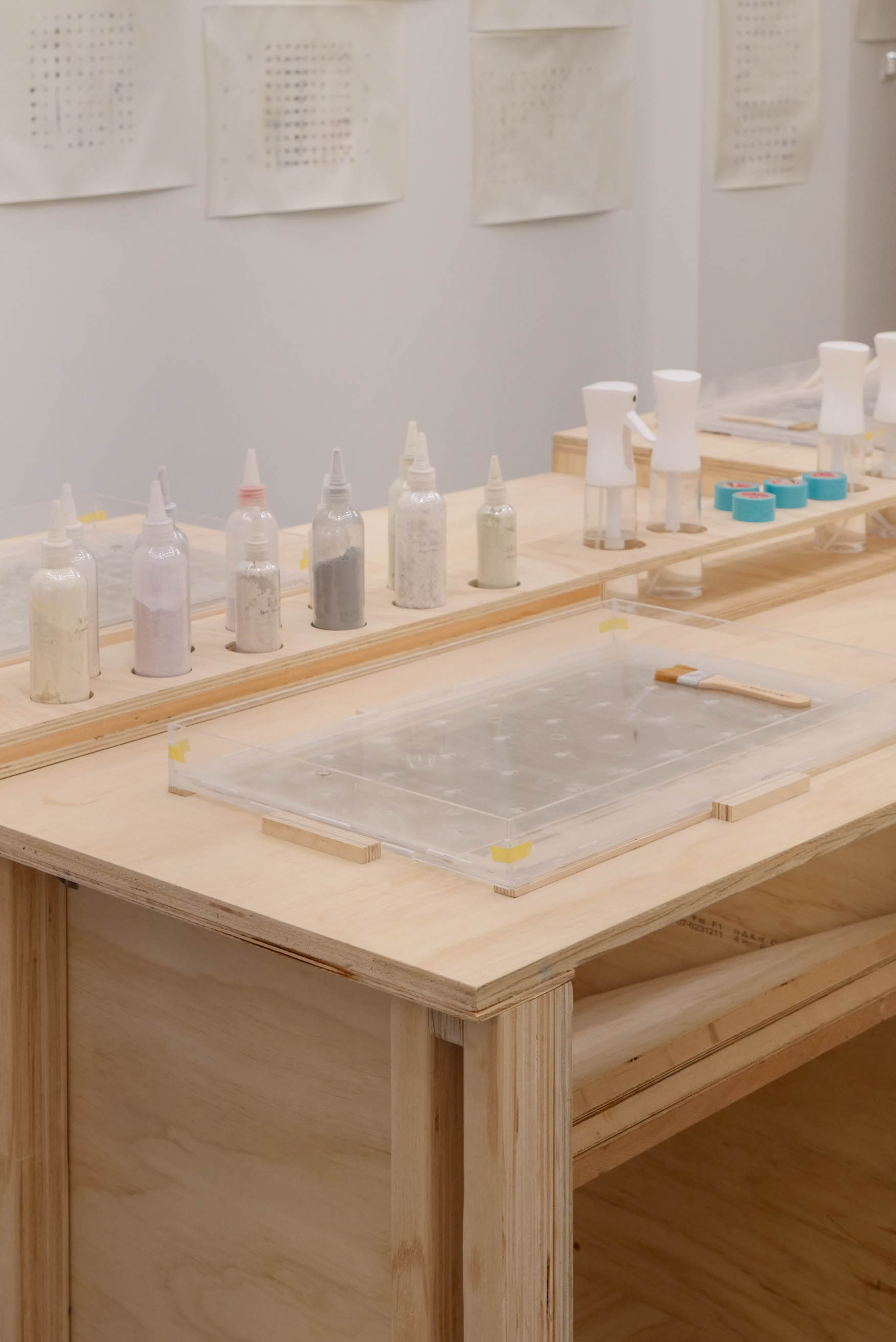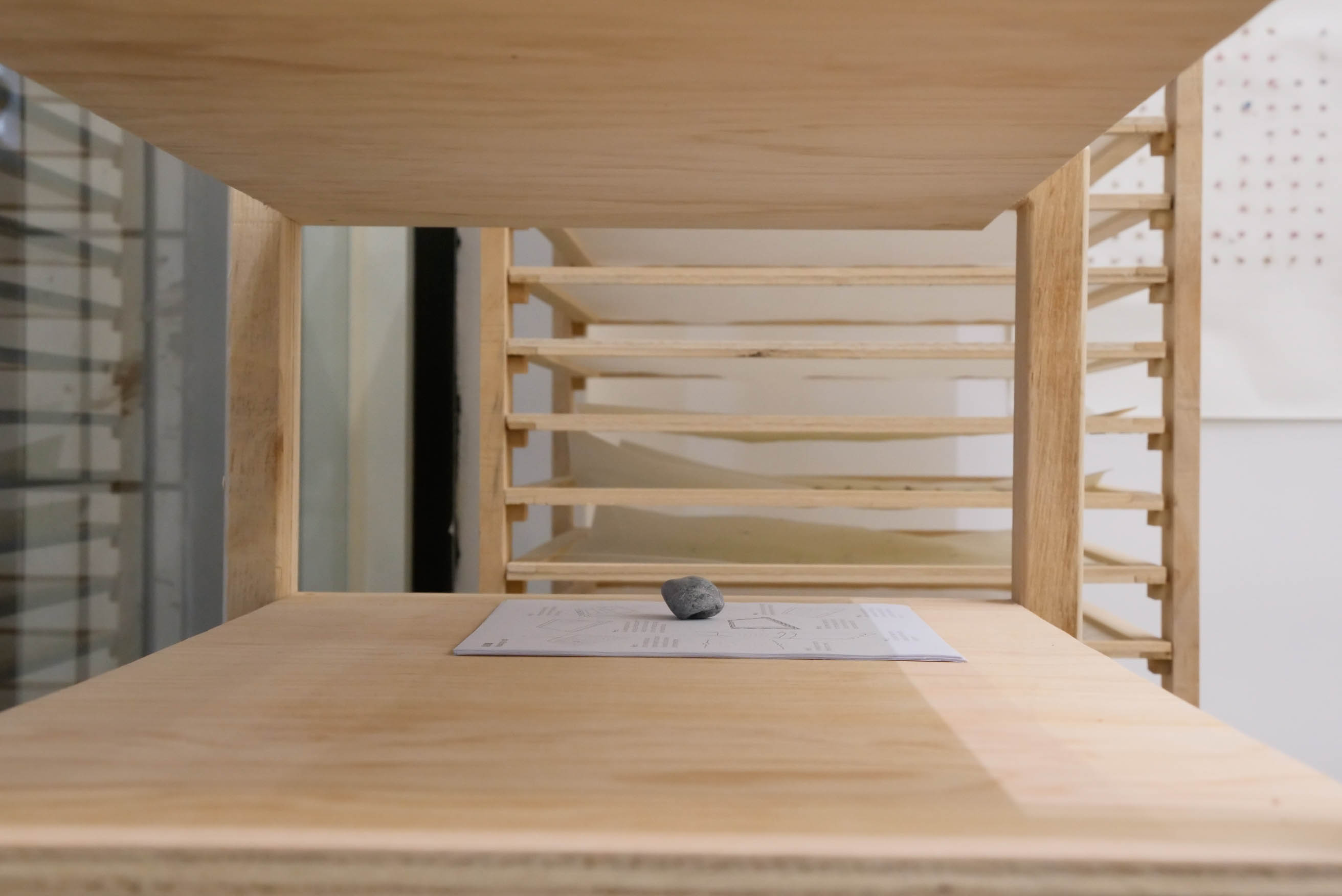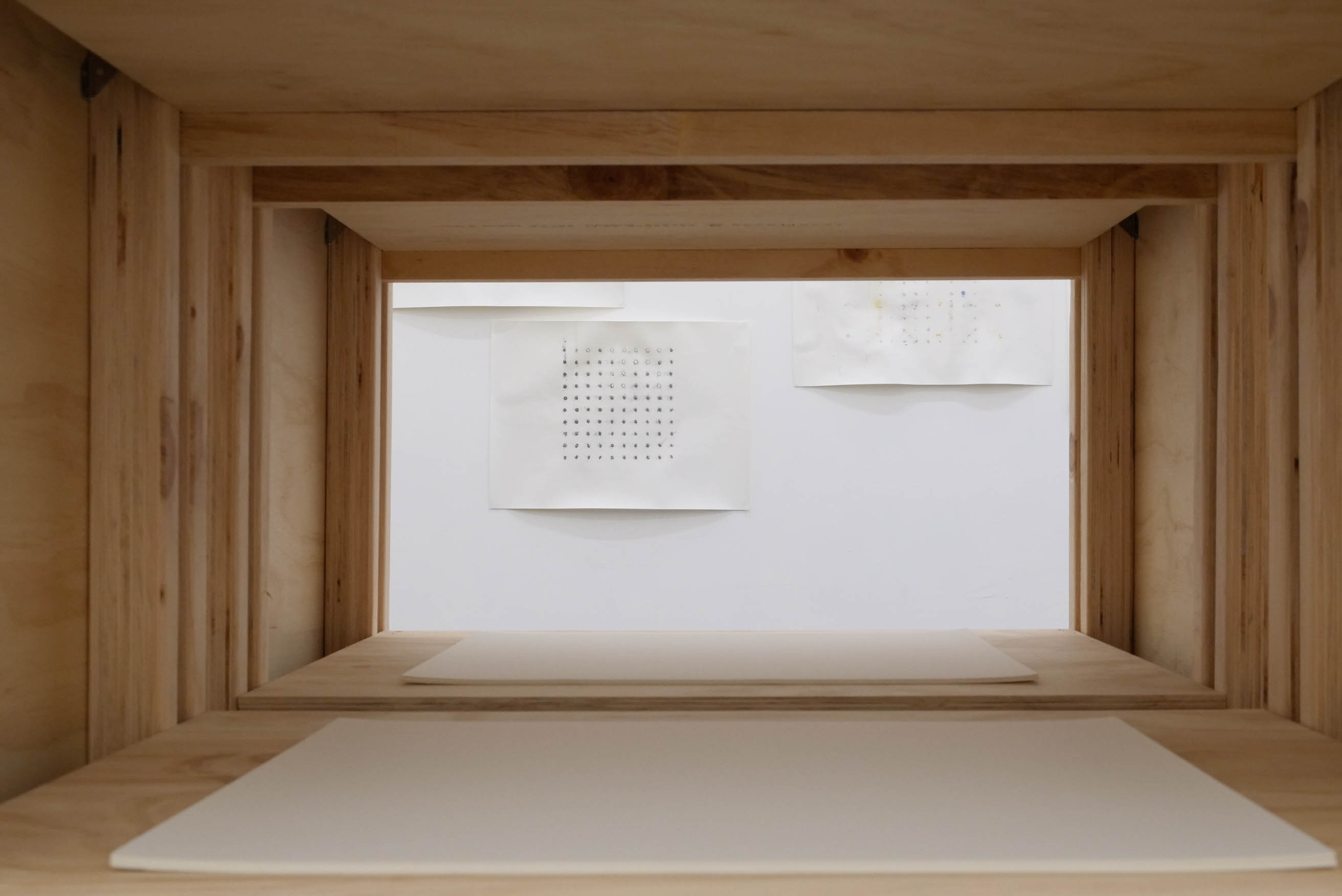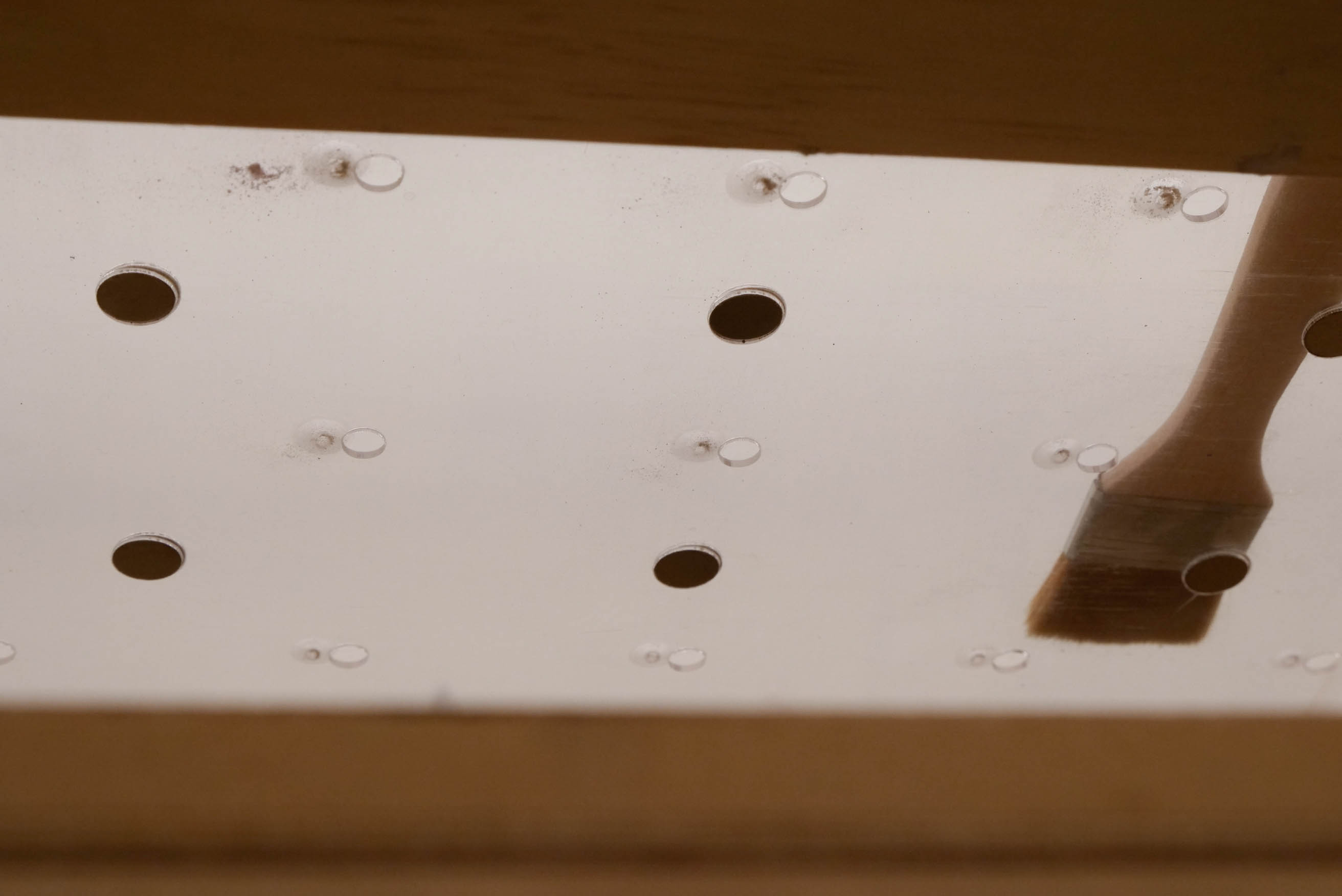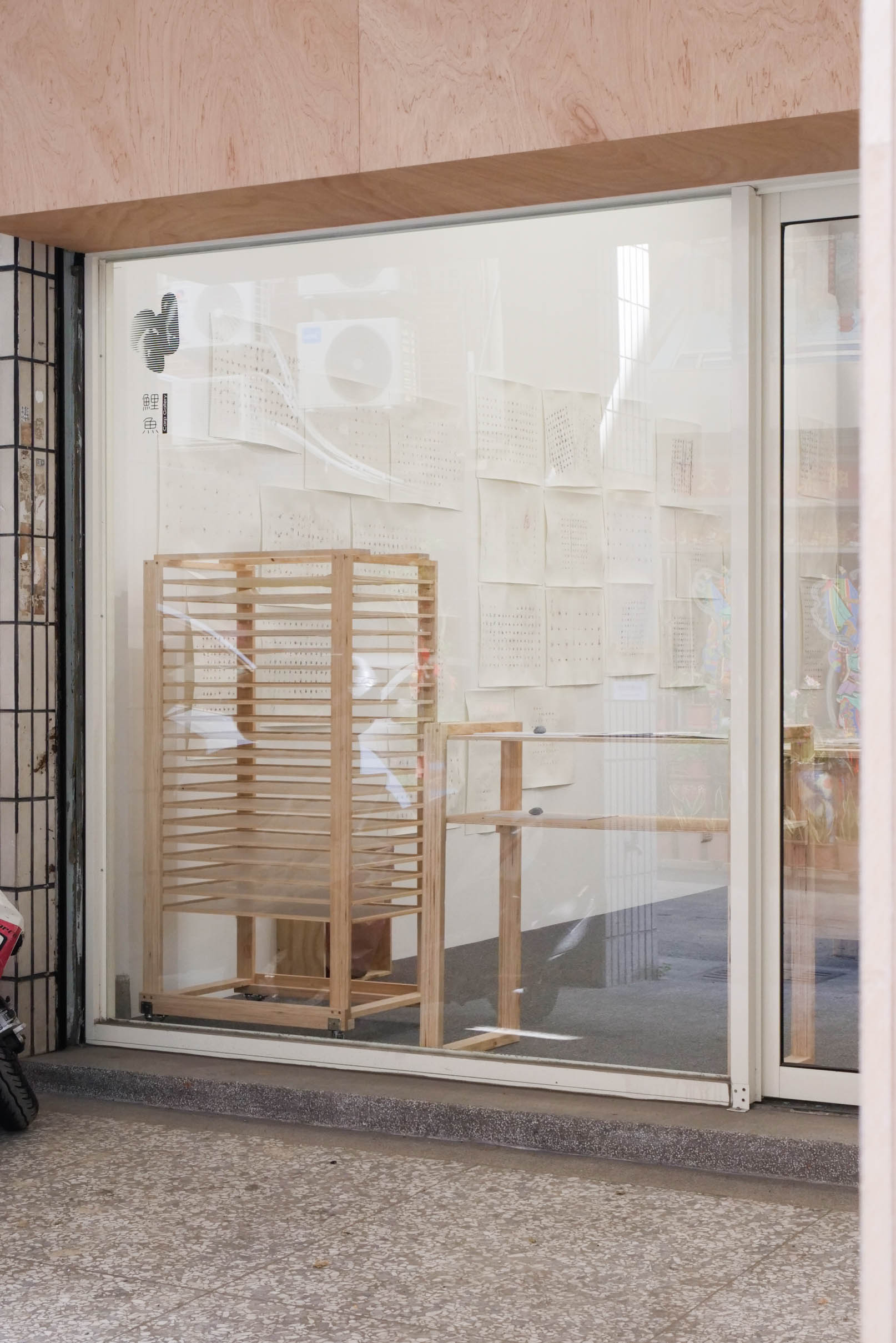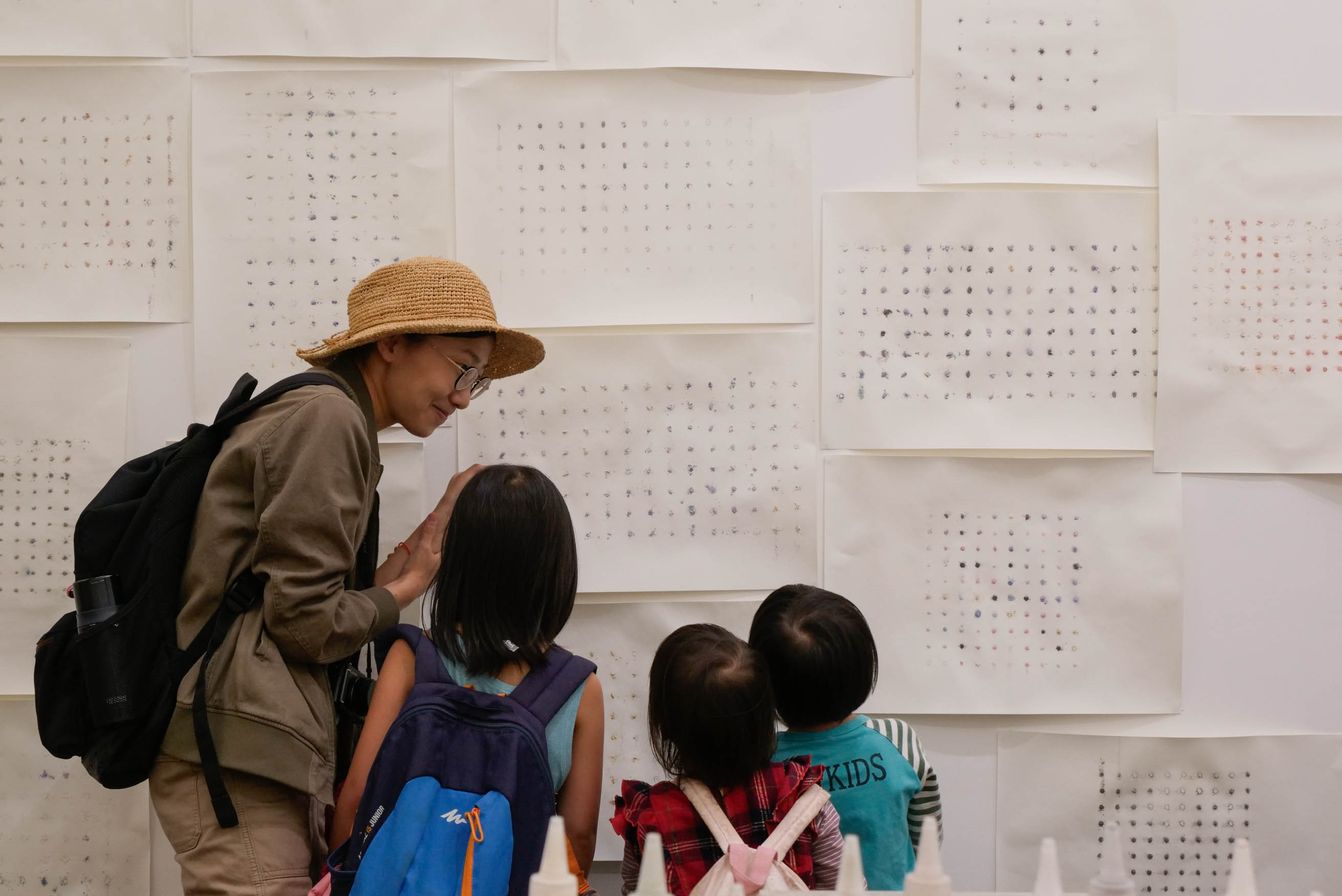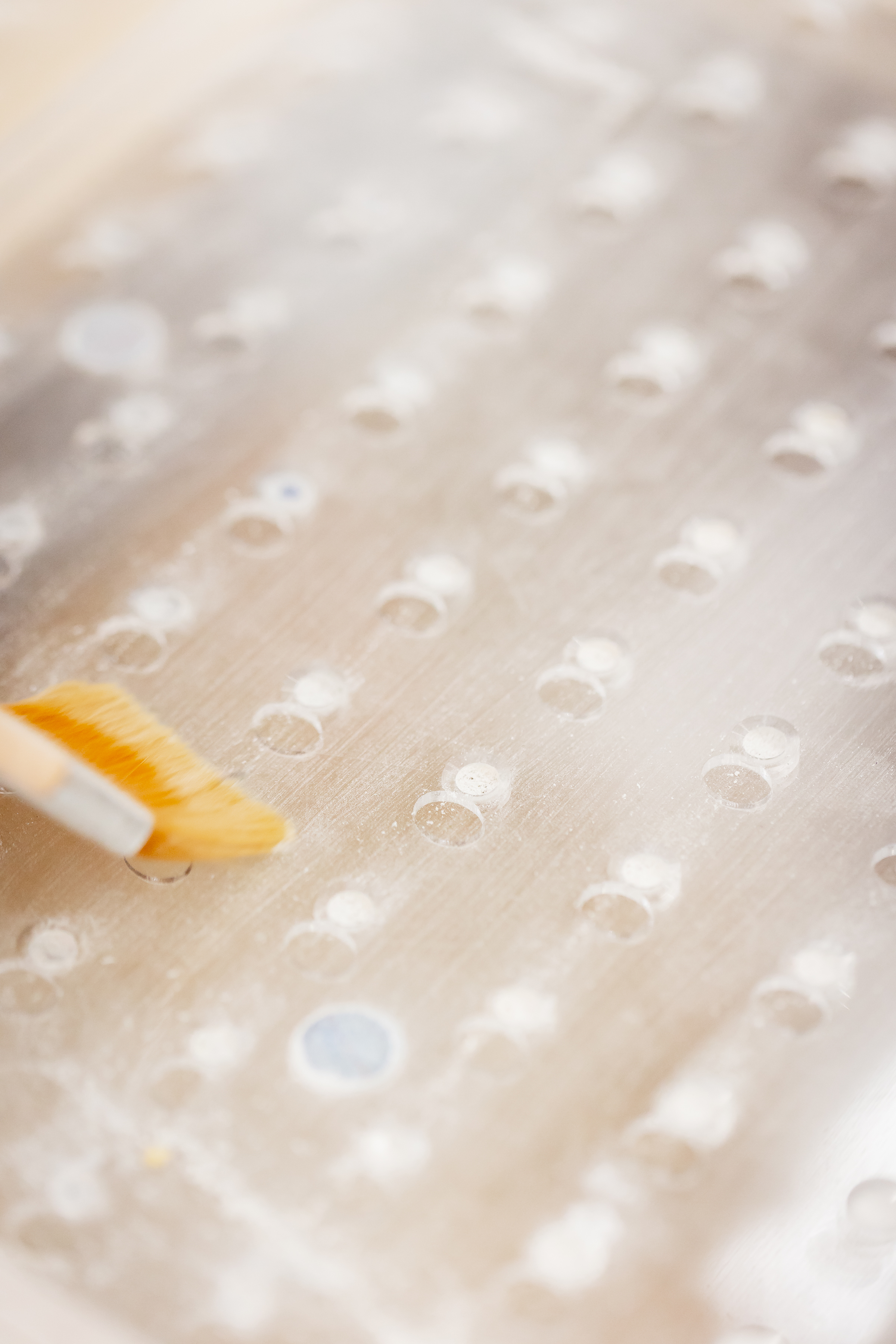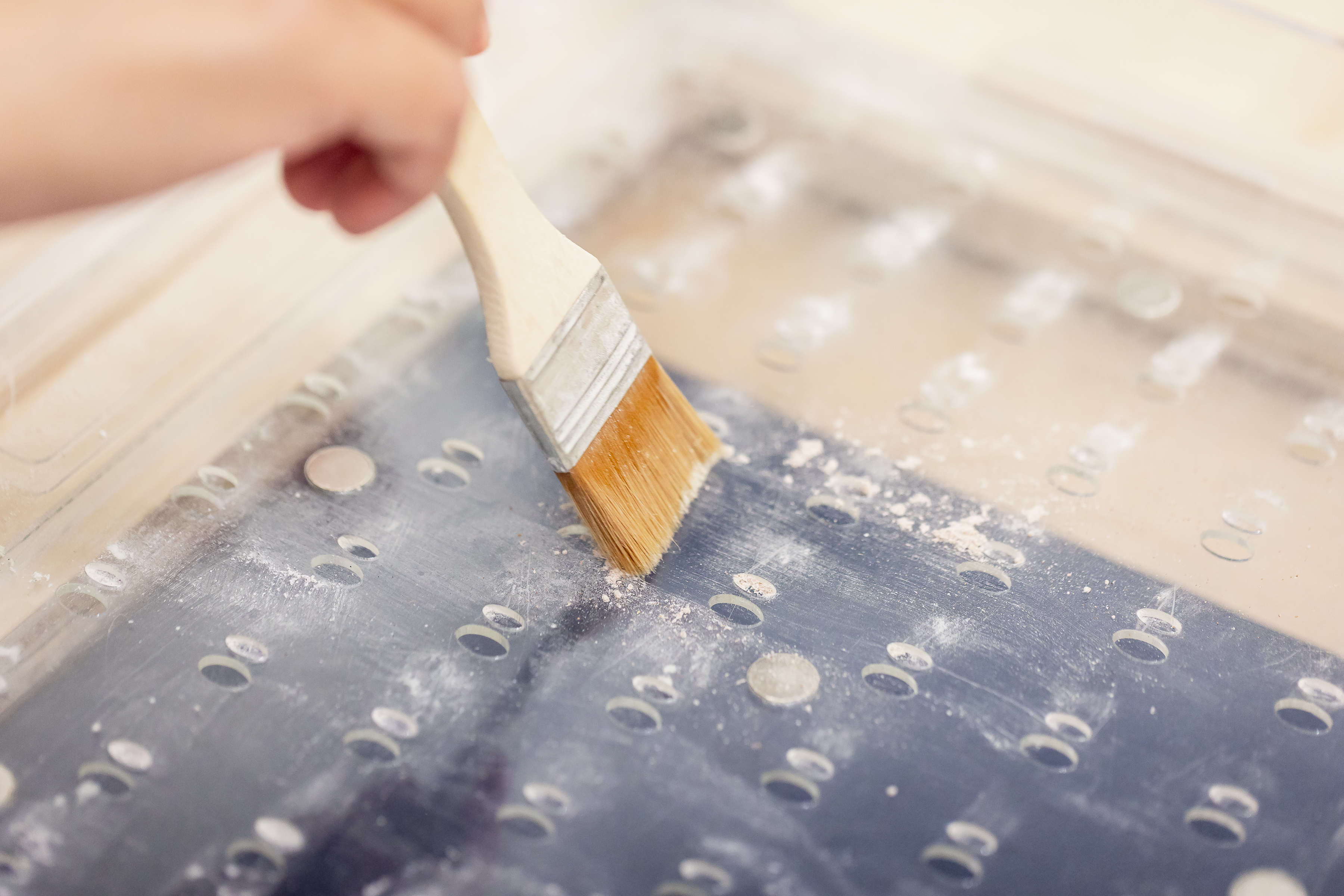
扁豆測量
木作檯面、播種盤、畫板、色粉瓶、水彩紙、毛刷、紙膠帶、噴水瓶、晾畫架、垃圾架
2025.02.15-2025.04.06
鯉魚藝廊,台中,台灣
Measuring a Lentil
While preparing materials for the exhibition, I carefully considered the size and spacing of seeds on the printed surface. I wanted to select a seed that fell somewhere between a soybean and a tomato seed in size. Due to its intended use, I preferred a seed with a flattened shape, which led me to lentils. I debated between regular lentils (6–9mm in diameter) and smaller lentils (3–5mm) before settling on a compromise.
However, when ordering the seedling trays from the manufacturer, I ran into some unexpected complications. They asked what I was planning to plant, and I replied, “Lentils.” They then asked if I would be using plug trays or sponge. At this point, I started to feel nervous. Even though I had already provided precise diameter and thickness measurements, they insisted that I send them a photo of the lentil seeds (a very diligent manufacturer indeed). I quickly realized that one lie often leads to another. So, I found an image online, one that included a ruler next to the seeds to indicate scale, and sent it over. But the manufacturer replied that the seeds needed to be placed on the ruler, not just beside it. They even provided “standard” reference images, instructing me to position the lentils directly on the ruler and take a photo. I was at a loss—I didn’t actually have any lentil seeds. How could I explain this peculiar situation of needing a seedling tray but not for planting? I began searching for similarly sized seeds among my supplies, but none of them resembled lentils closely enough. I couldn’t afford to be exposed; if they found out about my unusual request, they might refuse to sell me the trays.
Then, a thought struck me—I could fabricate an image! I quickly found a picture of lentils, selected the roundest and most convincing one, edited it onto a ruler, adjusted the lighting and saturation to make it look realistic, and sent it to the manufacturer. While waiting for their response, I grew increasingly anxious, worried that my deception would be uncovered. At the same time, I realized that their insistence on these meticulous details was part of a commercial framework designed to eliminate misunderstandings. Even when I tried to reassure them that a slight margin of error wouldn’t be a problem, the manufacturer remained unconvinced. My abstract request, paired with my vague explanations, was challenging the practical and precise logic of commercial production. In this process, useful objects were being repurposed and transformed into something functionally useless yet personally significant—an approach that seemed nonsensical even within the custom-ordering framework. Fortunately, after some deliberation, the manufacturer finally approved the image, and the order was successfully completed.
Measuring a Lentil
Wooden workbench, seedling tray, drawing board, pigment powder, watercolor paper, brush, masking tape, spray bottle, drying rack, bin rack
2025.02.15-2025.04.06
Carp Gallery, Taichung, Taiwan
Wooden workbench, seedling tray, drawing board, pigment powder, watercolor paper, brush, masking tape, spray bottle, drying rack, bin rack
2025.02.15-2025.04.06
Carp Gallery, Taichung, Taiwan


